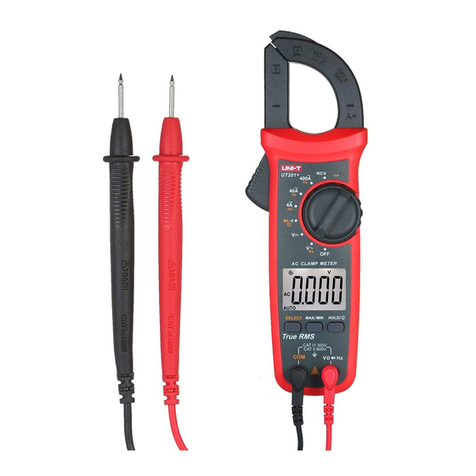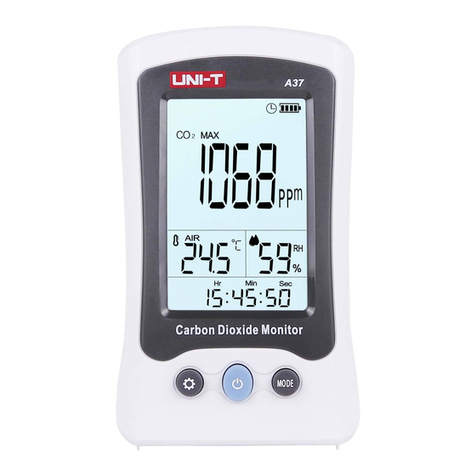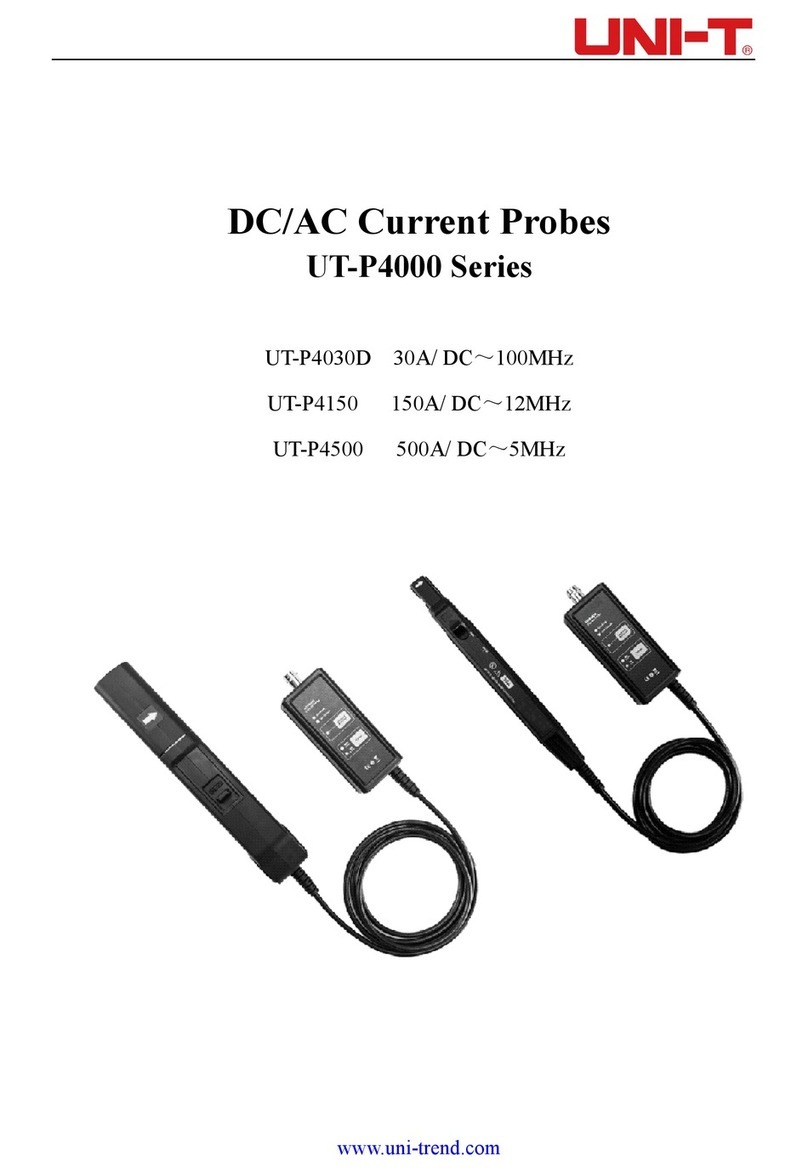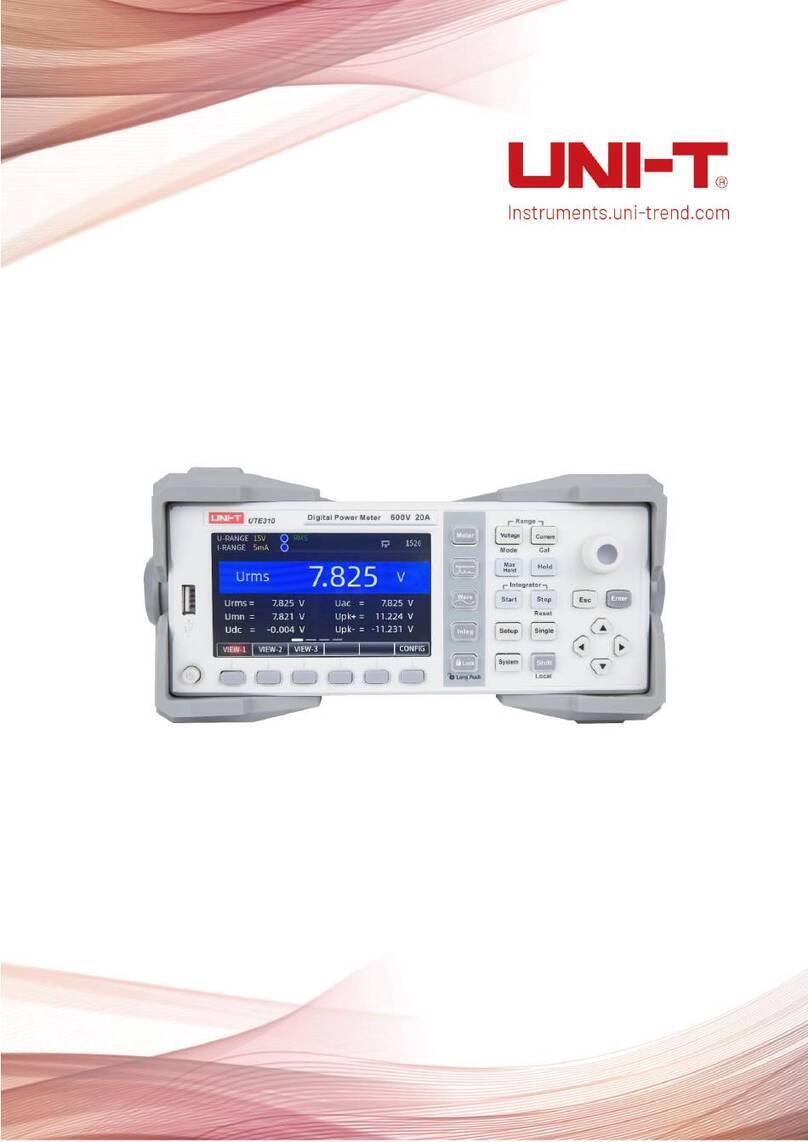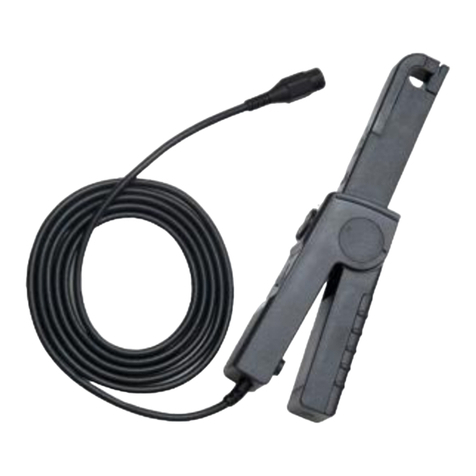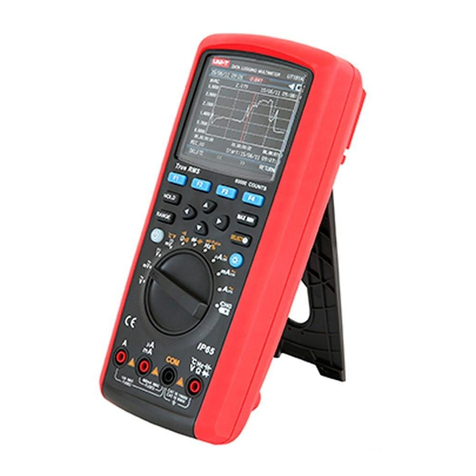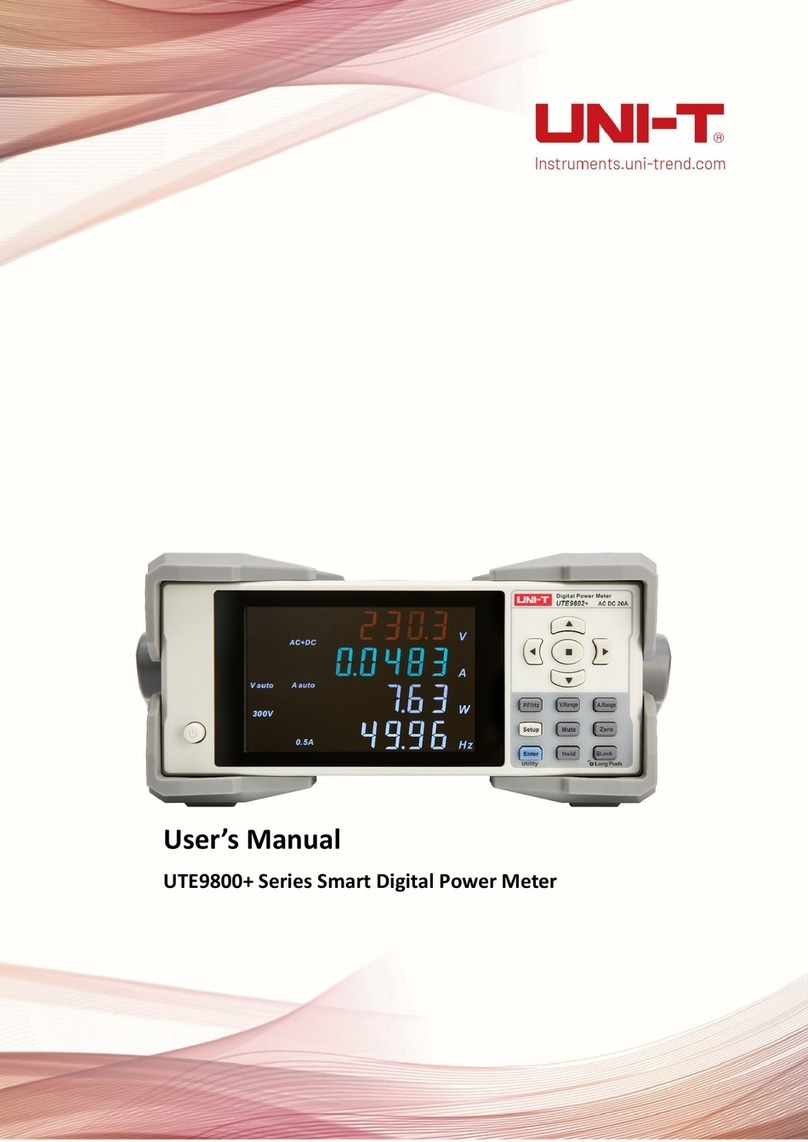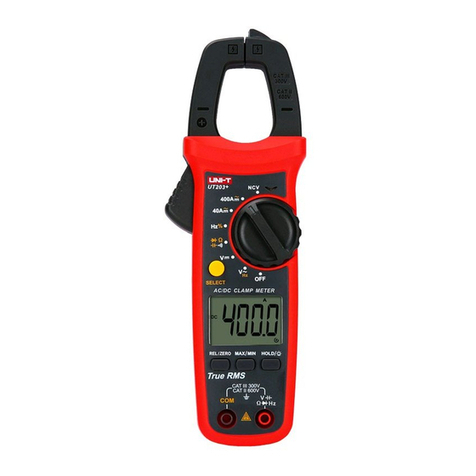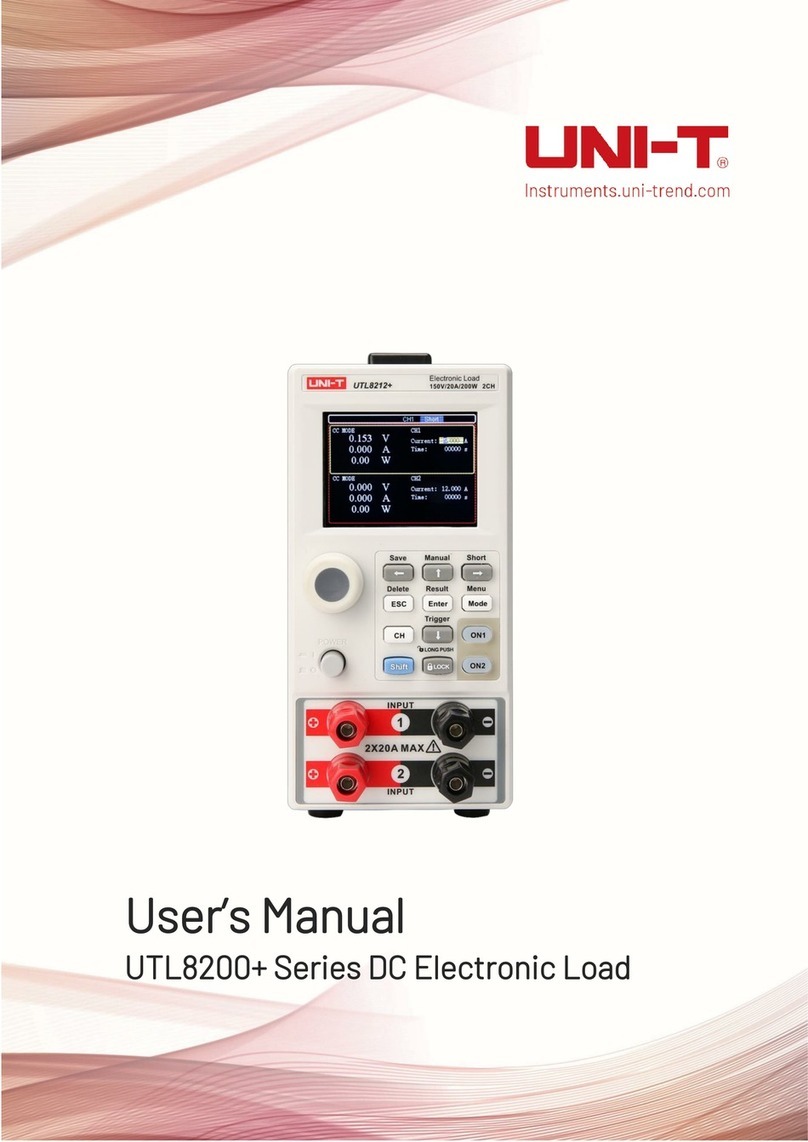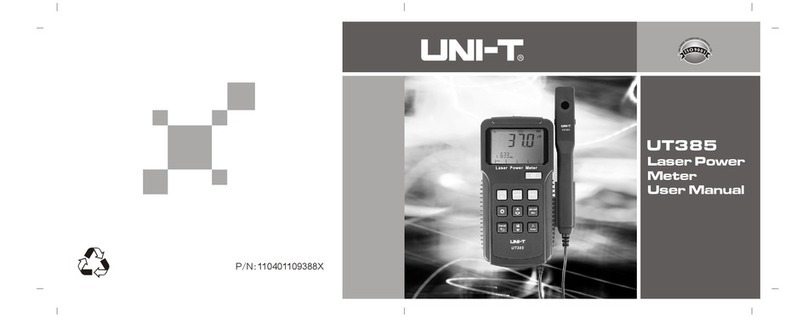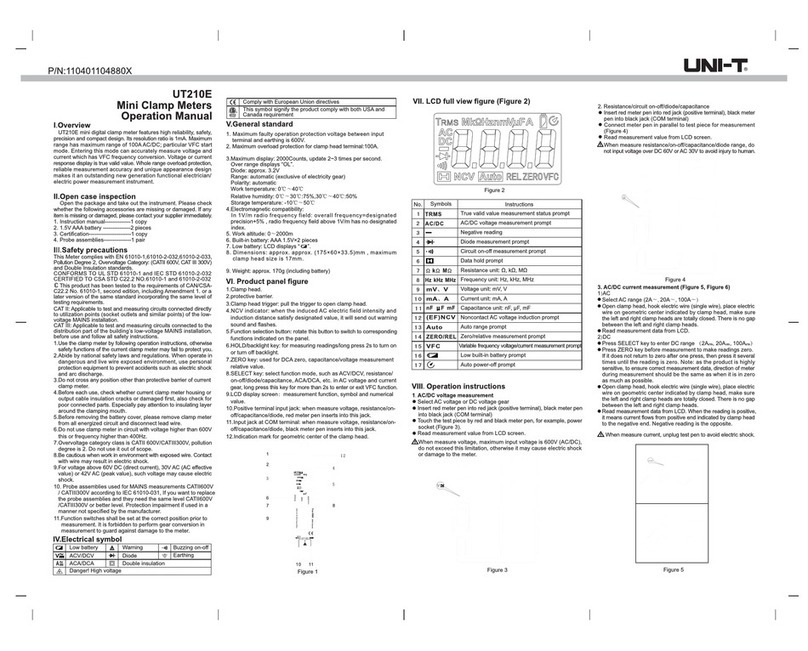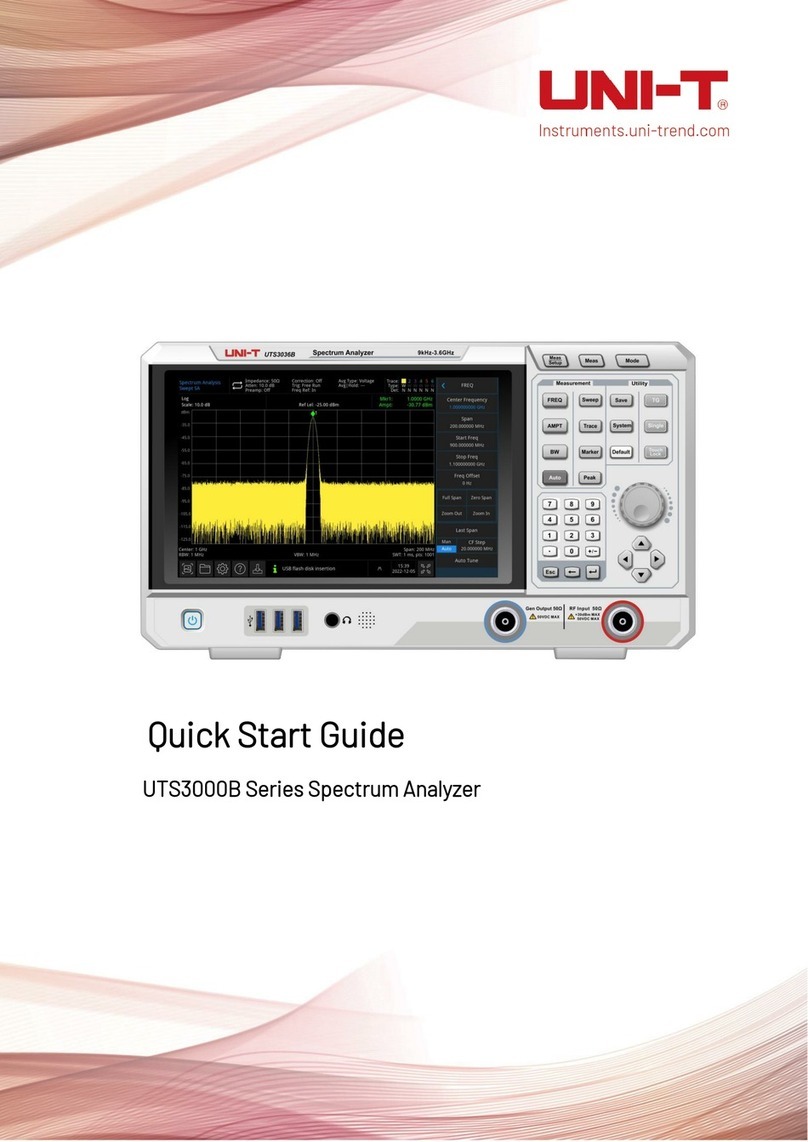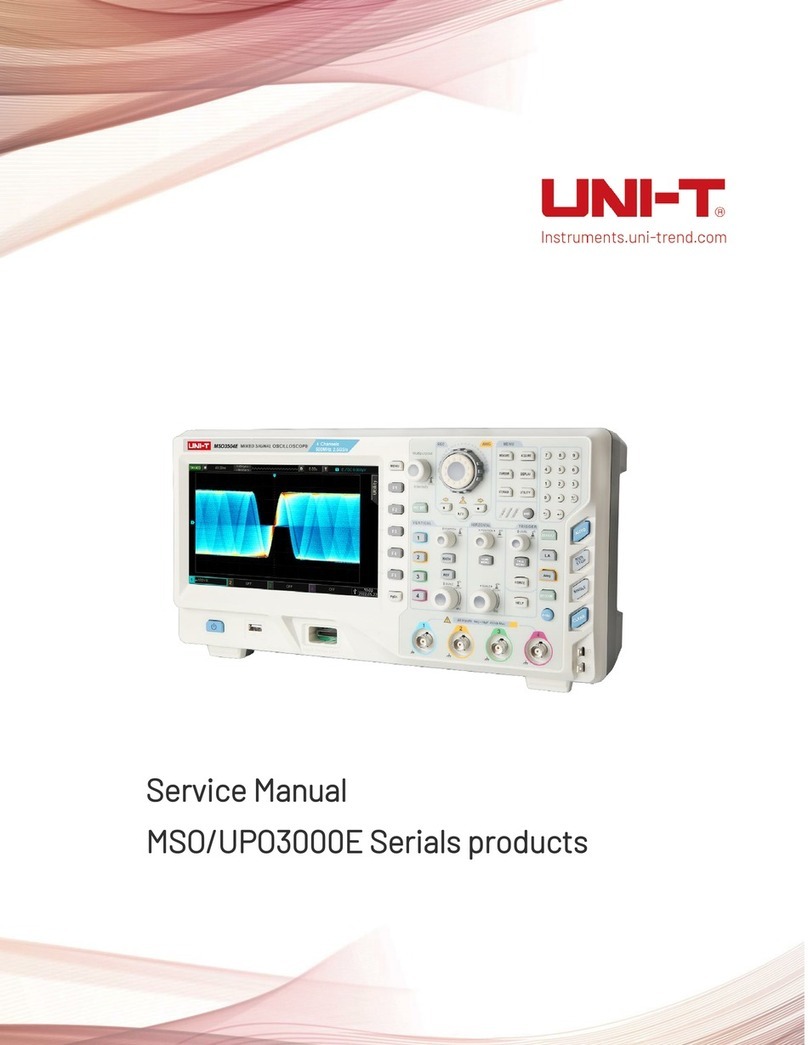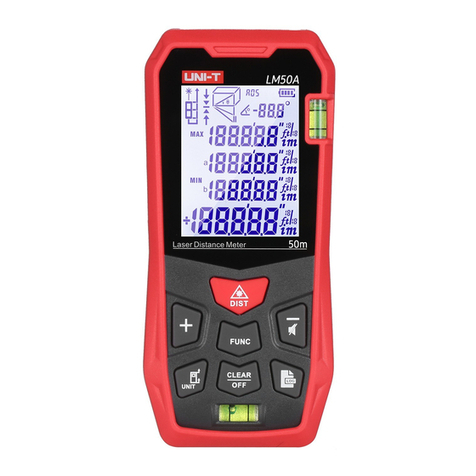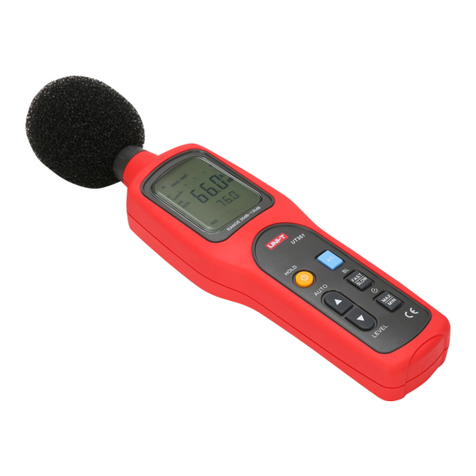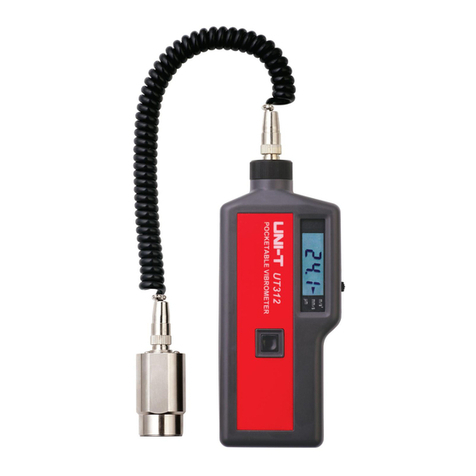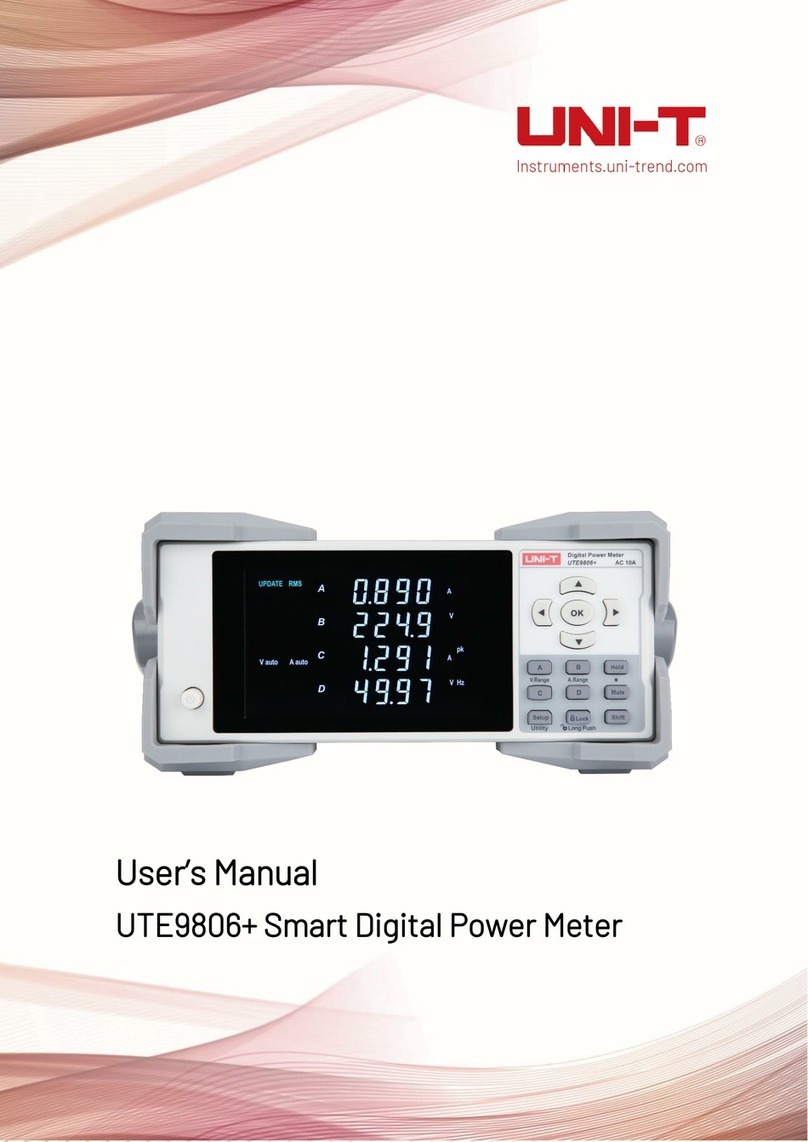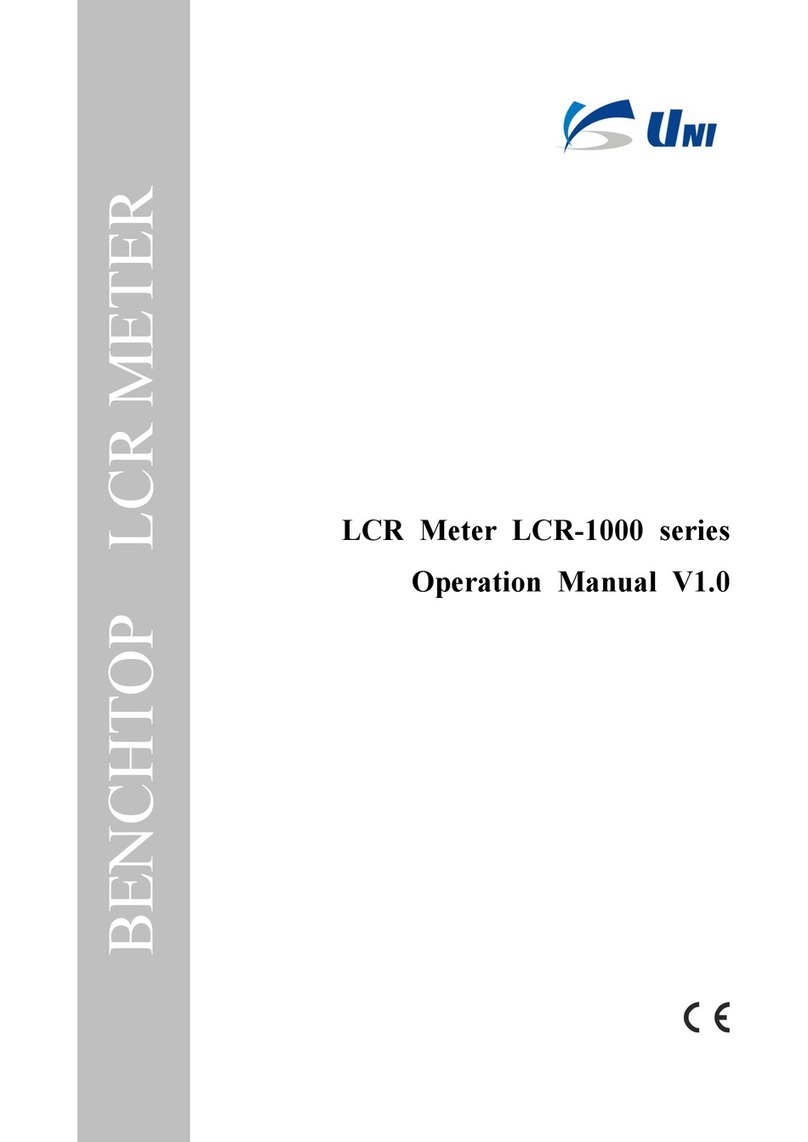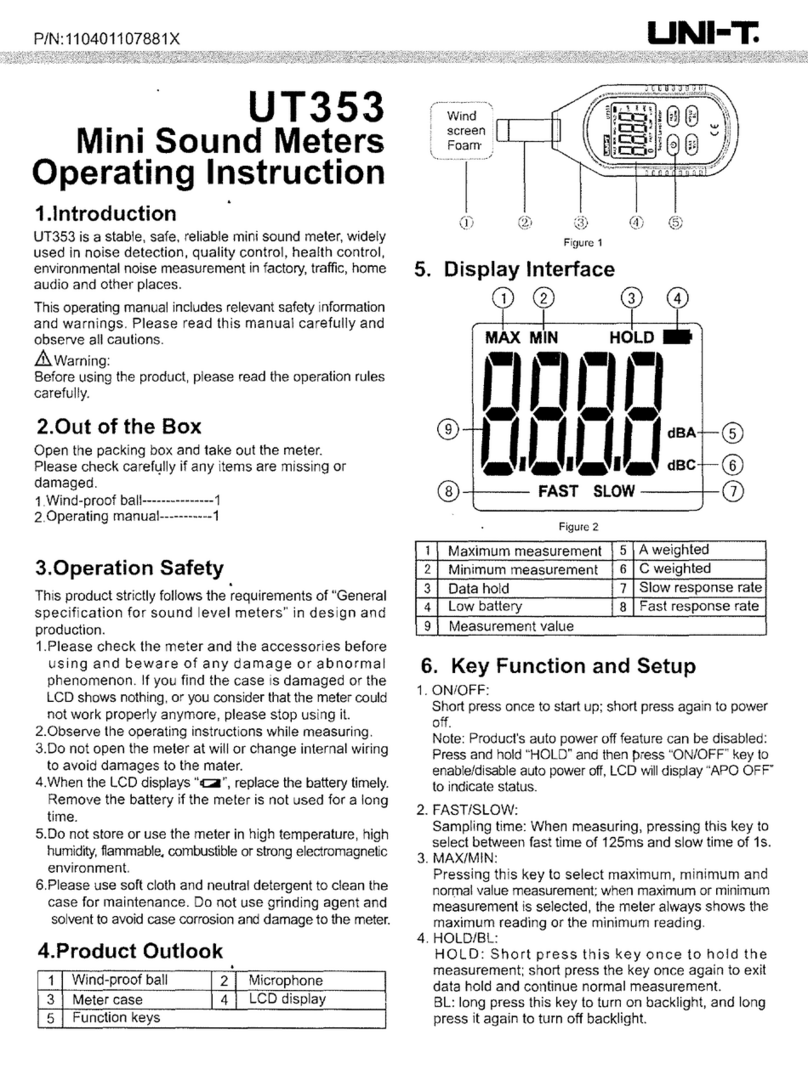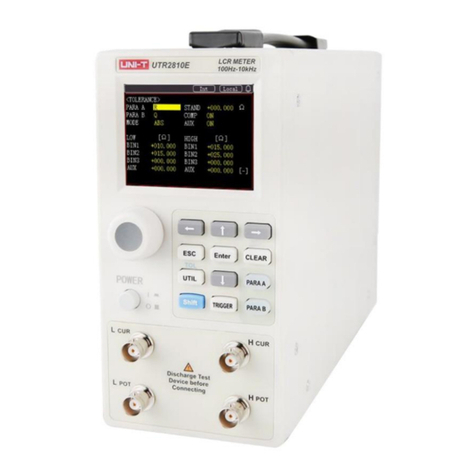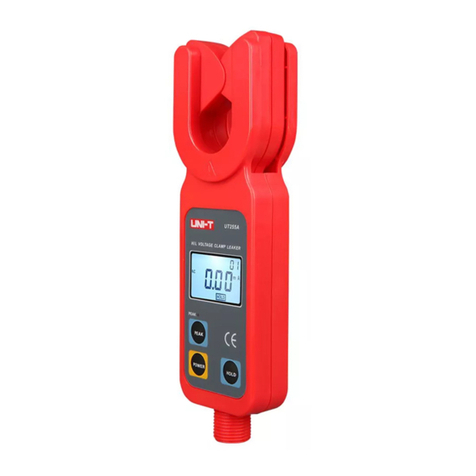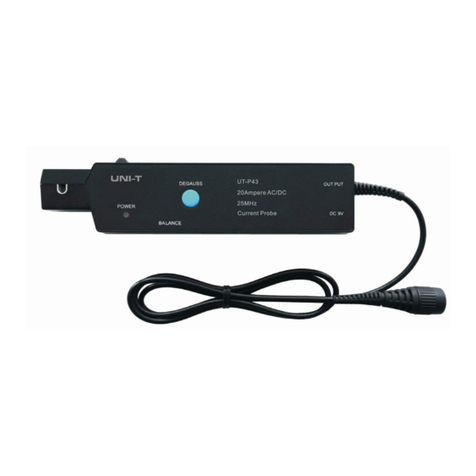Overview
This Operating Manual covers safety information related
to the multimeter. Please read the relevant information
carefully and observe all the Warnings and Notes strictly.
Warning
To avoid electric shock or personal injury, read the
"Safety Information"carefully before using the
Meter.
Unpacking Inspection
Open the package case and take out the Meter. Check
the following items carefully for any missing or
damaged part:
In the event you find any missing or damaged item,
please contact your dealer immediately.
Holster
Item
1
2
3
4
Description
English Operating Manual
Test Leads
9V Battery (NEDA 1604, 6F22 or 006P)
Qty
1 pc
1 pair
1 pc
1 pc
Safety Information
This Meter complies with IEC61010 Overvoltage Category
(CAT.II1000V, CAT.III 600V), Double Insulation, Pollution
Degree 2 standards.
CAT.II: Local level, appliance, PORTABLE EQUIPMENT
etc., with smaller transient overvoltages than CAT. III
CAT.III: Distribution level, fixed installation, with smaller
transient overvoltages than CAT. IV
Use the Meter only as specified in this operating manual,
otherwise the protection provided by the Meter may be
impaired.
In this manual, a Warning identifies conditions and
actions that pose hazards to the user, or may damage
the Meter or the equipment under test.
ANote identifies the information that user should pay
attention to.
Warning
To avoid possible electric shock or personal injury,
and to avoid possible damage to the Meter or to the
equipment under test, adhere to the following rules:
zBefore using the Meter inspect the case. Do
not use the Meter if it is damaged or the case (or
part of the case) is removed. Look for cracks or
missing plastic. Pay attention to the insulation
around the connectors.
zInspect the test leads for damaged insulation
or exposed metal. Check the test leads for
continuity. Replace damaged test leads with
identical model number or electrical specifications
before using the Meter.
zWhen using the test leads, keep your fingers
behind the finger guards.
zDo not apply more than the rated voltage, as
marked on the Meter, between the terminals or
between any terminal and grounding.
zWhen the Meter working at an effective voltage
over 60V in DC or 30V in AC, special care should
be taken for there is danger of electric shock.
zUse the proper terminals, function, and range
for your measurements.
zThe rotary switch should be placed in the right
position and no any changeover of range shall
be made during measurement to prevent damage
of the Meter.
zDisconnect circuit power and discharge all high-
voltage capacitors before testing current,
resistance, diodes or continuity.
zReplace the battery as soon as the battery
indicator appears. With a low battery, the Meter
might produce false readings that can lead to
electric shock and personal injury.
zWhen servicing the Meter, use only the replacem
-ent parts with the same model number or identical
electrical specifications.
zThe internal circuit of the Meter shall not be
altered at will to avoid damage of the Meter and
any accident.
zSoft cloth and mild detergent should be used
to clean the surface of the Meter when servicing.
No abrasive and solvent should be used to
prevent the surface of the Meter from corrosion,
damage and accident.
zTurn off the Meter when it is not in use and
take out the battery when not used for a long
time.
zConstantly check the battery as it may leak when
it has been using for some time, replace the
battery as soon as leaking appears. A leaking
battery will damage the Meter.
zDo not use or store the Meter in an environment
of high temperature, humidity, explosive,
inflammable and strong magnetic field. The
performance of the Meter may deteriorate after
dampened.
zThe Meter is suitable for indoor use.
International Electrical Symbols
AC (Alternating Current).
DC (Direct Current).
AC or DC.
Grounding.
Double Insulated.
Low Battery Indication.
Continuity Test.
Diode.
Fuse.
Warning. Refer to the Operating Manual.
Conforms to Standards of European Union.
The Meter Structure (See Figure 1)
Figure 1
1 LCD Display.
2 Hold Button.
3 Rotary Switch.
4 Input Terminals.
5 Power Button.
AC current measurement range from
0.1μA to 10A
μ
Functional Buttons
The table below offers information about the functional
button operations.
AC voltage measurement.
Turn the power on and off.
zPress HOLD once to enter hold mode.
zPress HOLD again to exit hold mode
and the present value is shown.
zIn Hold mode, is displayed
HOLD
Display Symbols (See Figure 2)
Figure2
No. Symbol Meaning
1
The battery is low.
Warning: To avoid false readings,
which could lead to possible electric
shock or personal injury, replace the
battery as soon as the battery
indicator appears.
2
4Indicates negative reading.
5Test of diode.
6The continuity buzzer is on.
7Date hold is active.
8
High voltage indicator
Indicator for AC voltage or current.
The displayed value is the mean
value.
3AC
Connect
Terminal
Indicator of connecting test leads
into different input terminals.
AC
μAmAA
Ω
mVV k M
ΩΩ
4
6
8
9
Ω: Ohm. The unit of resistance.
kΩ: kilohm.1 x 103or 1000 ohms.
MΩ: Megaohm. 1 x 106or
1,000,000 ohms.
μA, mA, A
A: Amperes (amps). The unit of
current.
mA: Milliamp. 1 x 10-3 or 0.001
amperes.
μA: Microamp. 1x 10-6 or 0.000001
amperes.
V: Volts. The unit of voltage.
mV: Millivolt. 1 x 10-3 or 0.001 volts.
9
Ω,kΩ,MΩ
mV, V
Measurement Operation
A.Measuring DC Voltage (See Figure 3)
Figure 3
Warning
To avoid harm to you or damage to the Meter from
electric shock, please do not attempt to measure
voltages higher than 1000V DC/750V AC although
readings may be obtained.
The DC voltage ranges are: 200.0mV, 2.000V, 20.00V,
200.0V and 1000V.
To measure DC voltage, connect the Meter as follows:
1. Insert the red test lead into the VΩterminal and
the black test lead into the COM terminal.
2. Set the rotary switch to an appropriate measurement
position in V .
3. Connect the test leads across with the object being
measured.
The measured value shows on the display.
Note
zIf the value of voltage to be measured is unknown,
use the maximum measurement position (1000V)
and reduce the range step by step until a satisfactory
reading is obtained.
red black
zThe LCD displays “1” indicating the existing selected
range is overloaded, it is required to select a higher
range in order to obtain a correct reading.
zIn each range, the Meter has an input impedance
of approx. 10MΩ. This loading effect can cause
measurement errors in high impedance circuits. If
the circuit impedance is less than or equal to 10kΩ,
the error is negligible (0.1% or less).
zWhen DC voltage measurement has been completed,
disconnect the connection between the testing leads
and the circuit under test.
B.Measuring AC Voltage (See Figure 3)
Warning
To avoid harm to you or damage to the Meter from
electric shock, please do not attempt to measure
voltages higher than 1000V DC/750V AC although
readings may be obtained.
The AC voltage ranges are: 2.000V, 20.00V, 200.0V and
750.0V.
To measure AC Voltage, connect the Meter as follows:
1. Insert the red test lead into the VΩterminal and
the black test lead into the COM terminal.
2. Set the rotary switch to an appropriate measurement
position in Vrange.
3. Connect the test leads across with the object being
measured.
The measured value shows on the display, which is
RMS value of sine wave (mean value response).
Note
zIf the value of voltage to be measured is unknown,
use the maximum measurement position (750V) and
reduce the range step by step until a satisfactory
reading is obtained.
zThe LCD displays “1” indicating the existing selected
range is overloaded, it is required to select a higher
range in order to obtain a correct reading.
zIn each range, the Meter has an input impedance of
approx. 10MΩ. This loading effect can cause
measurement errors in high impedance circuits. If the
circuit impedance is less than or equal to 10kΩ, the
error is negligible (0.1% or less).
zWhen AC voltage measurement has been completed,
disconnect the connection between the testing leads
and the circuit under test.
C.Measuring DC Current (See Figure 4)
Warning
Never attempt an in-circuit current measurement
where the open circuit voltage between terminals
and ground is greater than 250V .
If the fuse burns out during measurement, the Meter
may be damaged or the operator himself may be hurt.
Use proper terminals, function, and range for the
measurement. When the testing leads are connected
to the current terminals, do not parallel them across
any circuit.
Figure 4
black red
The DC current ranges are: 200.0μA,2.000mA, 20.00mA,
200.0mA and 10.00A.
To measure current, do the following:
1. Turn off power to the circuit. Discharge all high-
voltage capacitors.
2. Insert the red test lead into the μAmA or 10A
terminal and the black test lead into the COM terminal.
3. Set the rotary switch to an appropriate measurement
position in Arange.
4. Break the current path to be tested. Connect the red
test lead to the more positive side of the break and
the black test lead to the more negative side of the
break.
5. Turn on power to the circuit.
The measured value shows on the display.
Note
zIf the value of current to be measured is unknown,
use the maximum measurement position (10A) and
10A terminal, and reduce the range step by step until
a satisfactory reading is obtained.
zWhen DC current measurement has been completed,
disconnect the connection between the testing leads
and the circuit under test.
D. Measuring AC Current (See Figure 4)
Warning
Never attempt an in-circuit current measurement
where the voltage between terminals and ground is
greater than 250V.
If the fuse burns out during measurement, the Meter
may be damaged or the operator himself may be hurt.
Use proper terminals, function, and range for the
measurement. When the testing leads are connected
to the current terminals, do not parallel them across
any circuit.
The AC current ranges are: 200.0μA,2.000mA, 20.00mA,
200.0mA and 10.00A.
To measure current, do the following:
1. Turn off power to the circuit. Discharge all high-
voltage capacitors.
2. Insert the red test lead into the μAmA or 10A
terminal and the black test lead into the COM terminal.
3. Set the rotary switch to an appropriate measurement
position in Arange.
Model UT90A is a 2000-count digital multimeter(referred
to as "the Meter") featuring versatile functions, safe, stable
and reliable performance. It can measure DC/AC voltage,
DC/AC current, resistance, diode and continuity and offer
a battery test. It is also equipped with large LCD, full icon
display, input connection indication, overload protection, etc.
The table below offers
current measurement range
RMS












